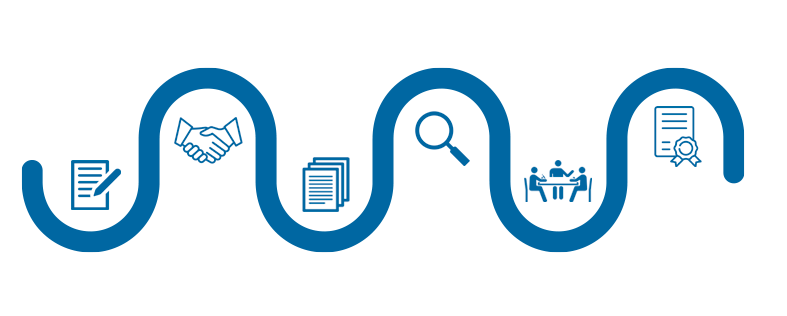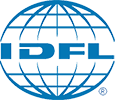
Better Cotton Measuring Cotton Consumption - Independent Assessment for Retailer and Brand (RB) Members
Aims
The aim of Better Cotton, a global sustainability initiative, is to make global cotton production better for the people who produce it, better for the environment it grows in, and better for the sector's future. Better Cotton focuses on promoting more sustainable practices in cotton farming, covering aspects such as environmental impact, social conditions for farmers, and economic viability.
Measuring cotton consumption is an essential aspect of Better Cotton's goals because it allows for tracking and assessing the impact of sustainable practices throughout the supply chain. By monitoring cotton consumption, Better Cotton can evaluate the adoption of sustainable farming practices and assess their effectiveness in reducing environmental impact and improving the well-being of cotton farmers.
Key objectives of measuring cotton consumption within the Better Cotton framework include:
- Assessing Sustainability Impact: Tracking the consumption of Better Cotton helps evaluate the overall impact on environmental, social, and economic aspects. It allows stakeholders to understand the extent to which sustainable practices are being adopted.
- Promoting Transparency: Measurement and reporting of cotton consumption contribute to transparency within the cotton supply chain. This transparency is crucial for consumers, retailers, and other stakeholders who want to make informed choices about the products they buy and sell.
- Encouraging Adoption: By measuring and highlighting the positive outcomes associated with Better Cotton, the initiative aims to encourage more farmers and businesses to adopt sustainable practices. This, in turn, contributes to the overall sustainability of the cotton industry.
- Setting Targets and Goals: Measuring cotton consumption enables the setting of specific targets and goals for increasing the adoption of Better Cotton. This helps drive continuous improvement and ensures that the cotton sector moves towards greater sustainability over time.
In summary, the aim of Better Cotton in measuring cotton consumption is to drive positive change in the cotton industry by promoting sustainability, improving the livelihoods of cotton farmers, and reducing the environmental impact of cotton production.
Scope
The scope of Better Cotton in measuring cotton consumption is broad and encompasses various aspects of the cotton supply chain. The initiative aims to have a comprehensive impact on sustainability, covering environmental, social, and economic dimensions. Here are key aspects of the scope:
- Supply Chain Transparency:
- Better Cotton focuses on enhancing transparency within the entire cotton supply chain. This includes tracking the flow of cotton from farms to manufacturing and retail.
- Environmental Impact:
- Measurement of cotton consumption allows Better Cotton to assess and address the environmental impact of cotton farming. This includes evaluating water usage, pesticide and fertilizer application, and overall ecological sustainability.
- Farm-level Practices:
- The initiative looks at the adoption of sustainable farming practices at the individual farm level. This involves assessing how well farmers are implementing Better Cotton standards to promote soil health, water efficiency, and biodiversity conservation.
- Social Responsibility:
- Better Cotton extends its scope to social aspects, evaluating the conditions and well-being of cotton farmers. This includes fair labor practices, workers' rights, and community engagement. Measuring cotton consumption helps ensure that social responsibility is integrated into the supply chain.
- Market Transformation:
- Better Cotton aims to transform the cotton market by encouraging more businesses to source and use Better Cotton. The measurement of consumption is vital in showcasing the market demand for sustainable cotton and influencing businesses to adopt responsible sourcing practices.
- Global Reach:
- The scope of Better Cotton is global, encompassing cotton production in various countries. By measuring consumption globally, the initiative can track the progress of sustainability practices on a broad scale and work towards creating a more sustainable global cotton industry.
- Continuous Improvement:
- Better Cotton's scope includes fostering a culture of continuous improvement. Regular measurement of cotton consumption allows the initiative to set targets and goals, monitor progress, and adapt strategies to address emerging challenges and opportunities.
- Stakeholder Collaboration:
- The initiative engages with a wide range of stakeholders, including farmers, businesses, NGOs, and consumers. Measuring cotton consumption provides a common metric for assessing the effectiveness of sustainability efforts and facilitates collaboration among stakeholders.
In summary, the scope of Better Cotton in measuring cotton consumption is multifaceted, aiming for a holistic transformation of the cotton industry toward greater sustainability and responsible practices across the supply chain.
Requirements
- IDFL will perform a Remote Assessment of the document review and process.
- Be a Better Cotton Retailer and Brands (RB) Member for 12-months.
- Submit an annual 12-month Cotton Fiber Consumption Measuring Submission Form to BC by 15 January (depending on Member Size Category).
- Commissioning an Independent Assessment (report due by 31 March 2024).
- Document Protocol
- Records (Product Components, Third Party Brands, Data Collection, Timeframe, Exclusions, Voluntary Exclusions, Record Keeping).
Additional Resources
Audit & Certification Process

IDFL Team
- Africa | africa@idfl.com
- Bangladesh | bangladesh@idfl.com
- China | china.audits@idfl.com
- Europe | eu.audits@idfl.com
- India | india@idfl.com
- North & South America | na.audits@idfl.com
- Pakistan | pakistan@idfl.com
- Taiwan | taiwan.audits@idfl.com
- Turkey | turkey@idfl.com
- Vietnam | vietnam.audits@idfl.com
